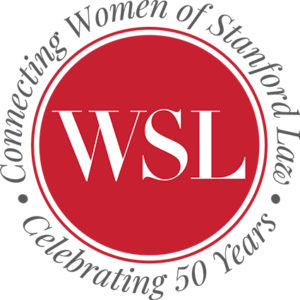Women of Stanford Law

It was 1971. Women made up about 13 percent of the Stanford Law School student body. The faculty was all male, as was the senior administration. And according to a statement signed by a group of 1L women that year, lack of diversity wasn’t the only reason they felt marginalized. They wrote that the attitudes of male students and faculty members also reflected “the bastard status” of women law students. • And so, Women of Stanford Law was born. The group focused on recruiting more women students, preventing discrimination in hiring, and pressuring the law school to hire women faculty. Barbara Babcock, who was appointed in 1972 as Stanford Law’s first female member of the tenure line faculty (and passed away in 2020), quickly became an important part of WSL and expanded the school’s offerings to include classes and events of particular interest to women. • In the fifty years since its founding, WSL, as it is now known, has continued to advocate for gender equity and awareness, while providing a critical support network for generations of women. For Tricia Berke Vinson, JD ’76 (BA ’71, MA ’72), former director and now of counsel to the Legal Aid Society of San Mateo County’s Health Consumer Center, WSL was “a home, a safe harbor, in a place that wasn’t very friendly or welcoming.” • “WSL was one of the things that absolutely saved me as a 1L, when I was pecking around the law school trying to figure out where I might find a home for my worries and my sense that I maybe just didn’t belong,” says Dahlia Lithwick, JD ’96, now a contributing editor at Newsweek and senior editor at Slate.
Today, SLS consistently enrolls a student body that is about 50 percent women and has a full-time faculty that is more than 30 percent women. And while WSL is still actively engaged in recruiting women students, it is even more focused on supporting those who have matriculated. Central to this mission is WSL’s mentorship program.
“Every 1L woman is paired with a 2L mentor, and transfer students are paired with 3L mentors,” explains current WSL co-president Claire Fieldman, JD ’22. Indeed, WSL co-president Olivia Malone, JD ’22, says, “As a 1L, I really leaned on my 2L mentor, especially during fall quarter. I could ask her anything, even the stupid questions.” Both agree that the mission of WSL is as vital today as it was 50 years ago. SL
